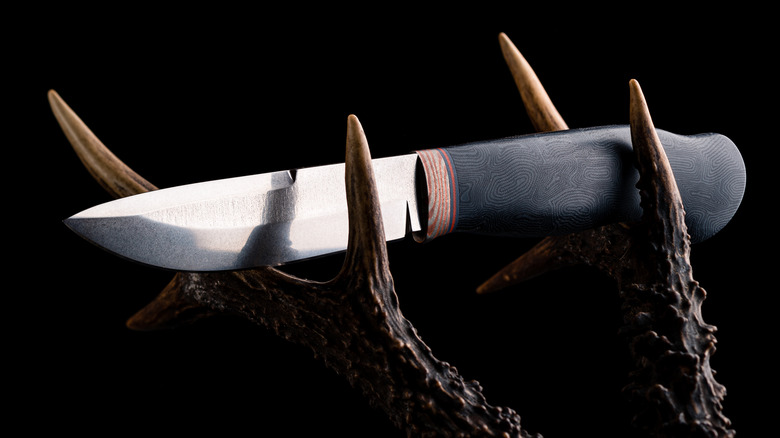The 250,000 Year Long Evolution Of The Chef's Knife
Forging a knife is undoubtedly a skilled craft but, conceptually speaking, the knife is a rather simple tool. Knives are cutting tools made from a hard material that has been sharpened on one edge. Usually, there is a handle. However, the oldest knife-like tools we know of, actually lack handles.
The Museum of Anthropology at the University of Missouri explains that their Oldowan tools, which are products of the oldest known stone-tool making from 2.5 million years ago, took stone cores and removed flakes to create a sharp edge. While analysis shows that both plants and animals were cut with these tools, the Bradshaw Foundation states that the exact purposes, uses of the tools, and their surrounding culture is still unknown. The first issue comes from the fact that after millions of years, data is scant. The second is that the tools look like something a chimpanzee could produce.
However, similar stone tools from 250,000 years ago were found in what was once an oasis near Azraq, Jordan. These tools had clear signs of blood and other animal matter (per Science Daily). More interesting, each tool seems to have been used for only one species of animal. No rhino DNA was found on a knife with duck DNA, for example. The Christian Science Monitor suggests that the tools were treated as disposable. Nor did the animal eating stop there, the scientists found evidence that pre-humans also ate wild cattle, camels, and wild horses.
250,000 years later, knife making has gone full circle
Once the conceptual bridge was made, the knife's evolution was a simple trajectory across the course of newer materials and more advanced production techniques. This is seen in an infographic made by Chef Knives Expert. Once the Copper Age dawned, knives had a definite look from which they rarely varied. The most recent innovation in knife making that Chef Knives Expert touches upon is the ceramic knife. These knives are made from powdered zirconium dioxide that is dry pressed and then fired. These blades are both hard and capable of holding an edge for longer than even steel. In a way, then, the most sophisticated knives of our day are high-tech versions of the Oldowan tools that came before.
Taste Cooking notes this full-circle trend in current and future-looking knife making. Besides ceramic, some makers are experimenting with wooden knives. Others, like Jebiga, are looking into incorporating the handle-less blob-like shape of the old stone tools with the Del Ben Primitive Knife. However, finding a place that actually sells the $250 knife is hard. So, for the moment, we might be stuck with knives that are in one sense more traditional and in another, less so.

